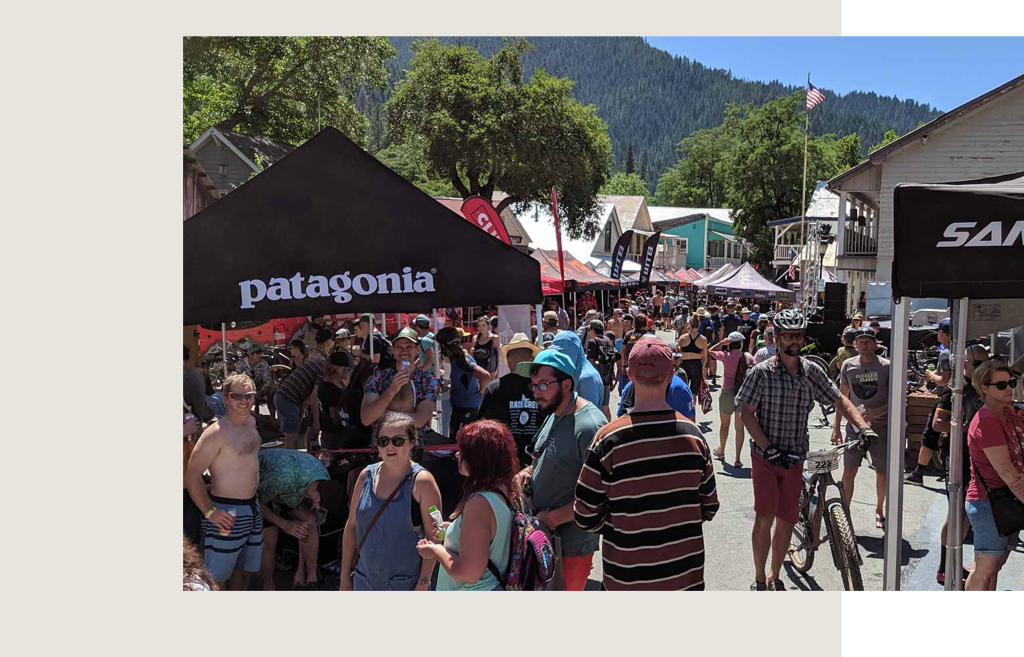No crowds. Lakes, trails, shopping, events. Did we mention no crowds?
Find yourself in the Lost Sierra.
Legend has it that the Lost Sierra got its nickname back in the 19th century when mail was still delivered by the Pony Express mail carriers. What’s for sure is that the nickname got its revival in honor of William Berry, a ski historian and author of Lost Sierra: Gold, Ghosts & Skis. Pack the essentials (including Berry’s and T.D. Bonner’s books), and hit the road up for some me-time and adventures at the Sierra Nevada’s northern end. The hundreds of alpine lakes and thousands of miles of trails are calling your name.
A spot that reflects its past but seamlessly blends the hip with the historic, the Lost Sierra has developed a rich, sustained arts and entertainment scene, especially when it comes to live music. Listen to live music at outdoor venues like The Brewing Lair, and The Drunk Brush, and experience the arts community at Plumas Arts. Enrich your life in the Lost Sierra.
There’s something for everyone to love in the Lost Sierra, where events unfold throughout the Summer season. From blockbuster festivals and live concerts to food- and drink-related celebrations and events, happenings of all kinds occur across the region throughout the year.

The Lost Sierra has art festivals, bike races, antique shows, brew festivals and more!
Outdoor enthusiasts enjoy the same sites from a different perspective, kayaking Salmon Lake, hiking miles of trails like the Lake Almanor Recreation Trail, or pedaling miles of bike trails and quiet country roads.
A spot that reflects its past but seamlessly blends the hip with the historic, the Lost Sierra has developed a rich, sustained arts and entertainment scene, especially when it comes to live music. Listen to live music at outdoor venues like The Brewing Lair, and The Drunk Brush, and experience the arts community at Plumas Arts. Enrich your life in the Lost Sierra.
Search a wide range of hotels, inns, bed and breakfasts, and accommodations for every taste and budget.
The Lost Sierra is a cultural term for the northern Sierra Nevada region in California in the United States. It encompasses the area of Plumas and Sierra Counties.
The Lost Sierra is distinguished by its relative geographical obscurity, as it lies between the better-known regions of the Sierra Nevada to the south and the Cascade Range to the north. Historically remote and inaccessible, the Lost Sierra has a widely varied geography, a unique history, and an economic legacy that reflects the historic importance of natural resources and the gradual emergence of tourism and recreation as mainstays in the regional economy.
The origin of the term “Lost Sierra” is sometimes popularly attributed to the riders of the Pony Express, though there is little evidence of this in verifiable historical sources. Modern usage is attributed to William Berry one-time official historian of the United States Ski Association, who used the term to describe the region when he visited it for the first time circa 1933. The term appears independently in regional newspapers as early as 1978.Berry publicized the term more widely in his 1991 book “Lost Sierra; Gold, Ghosts & Skis”.
The phrases “Lost Sierra” and “the Lost Sierra” appear quite frequently in a wide variety of popular content today, including online periodicals, websites, and blogs. The phrases are employed as both intentional regional branding by area residents and businesses and as a geographical reference to the area. “Lost Sierra” and “the Lost Sierra” are used frequently in web searches dating to 2004, the earliest year with Google historical search data available. The term is used most frequently by internet users in Northern California, including the geographically adjacent or semi-adjacent areas of Chico, Redding, the Sacramento Metropolitan area, and Stockton/Sacramento/Modesto. Reno, Nevada, which is the closest metropolitan area to the Lost Sierra, also features frequent searches for the term.
Historically, the economic engines of the Lost Sierra were mining, lumber, ranching, and railroads. These industries have all declined since their respective heydays for various reasons including over-cutting, regulation, declining returns, and changes in national consumption patterns.
Those historic industries, however, along with the completion of the Western Pacific Railway (1910) and the Feather River Highway (1937) which is now a National Scenic Byway, created a transportation infrastructure that permitted easy access to the previously hard to reach peaks and valleys of the Lost Sierra, allowing for the growth of tourism and recreation as a major source of economic growth for regional communities. Today, the Lost Sierra has become a destination area for a variety of activities like outdoor recreations, golfing, and angling.
Subscribe to the Discover the Lost Sierra newsletter and receive the latest dose of adventure!